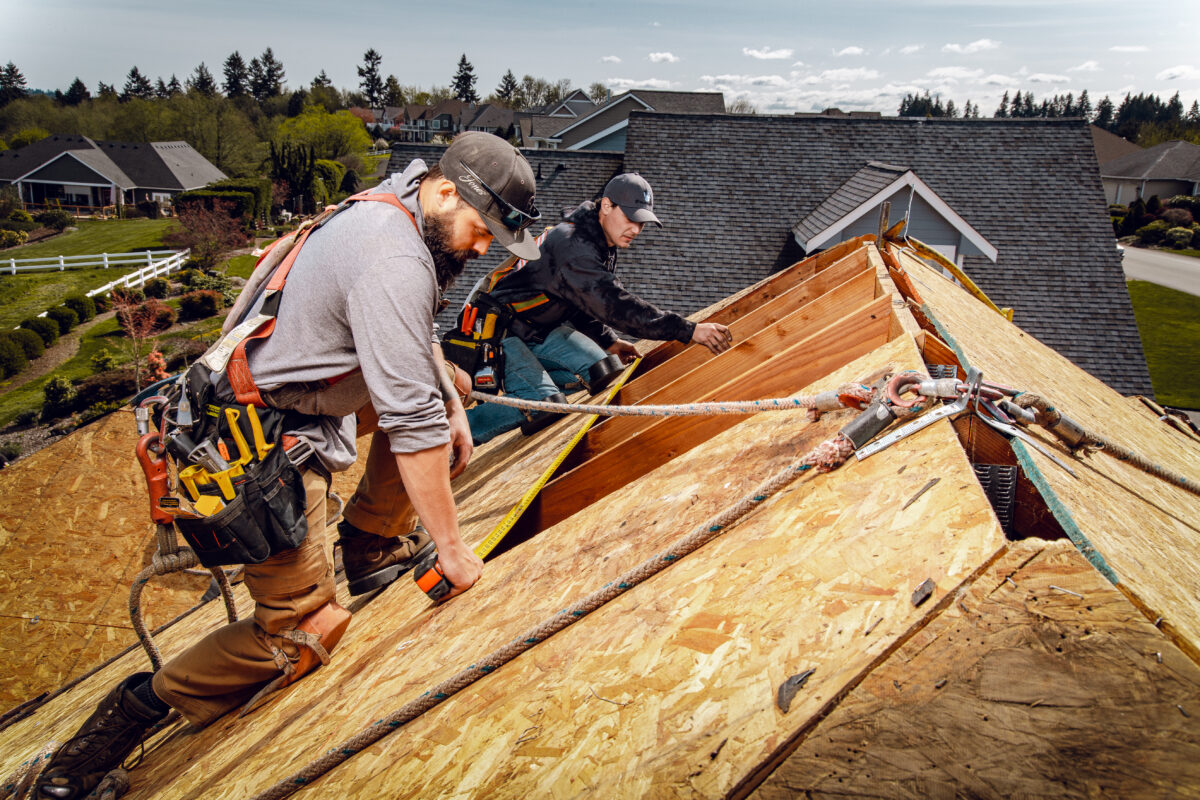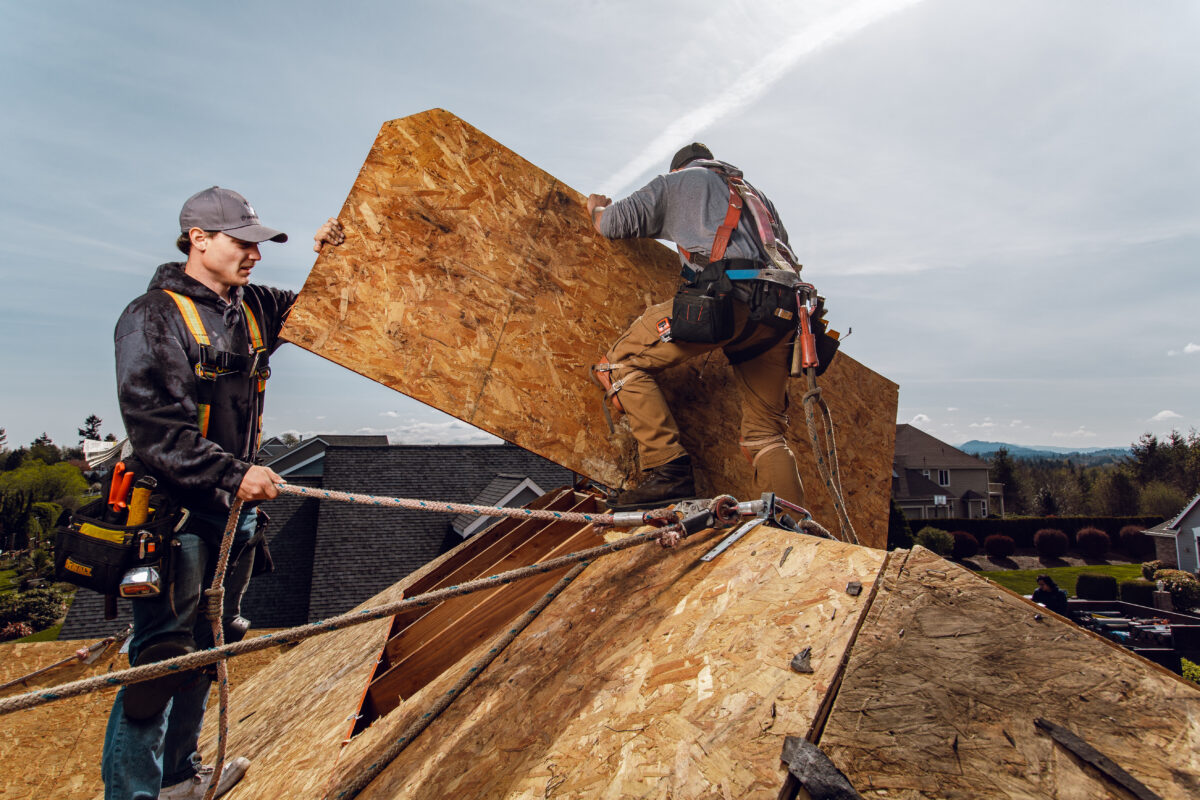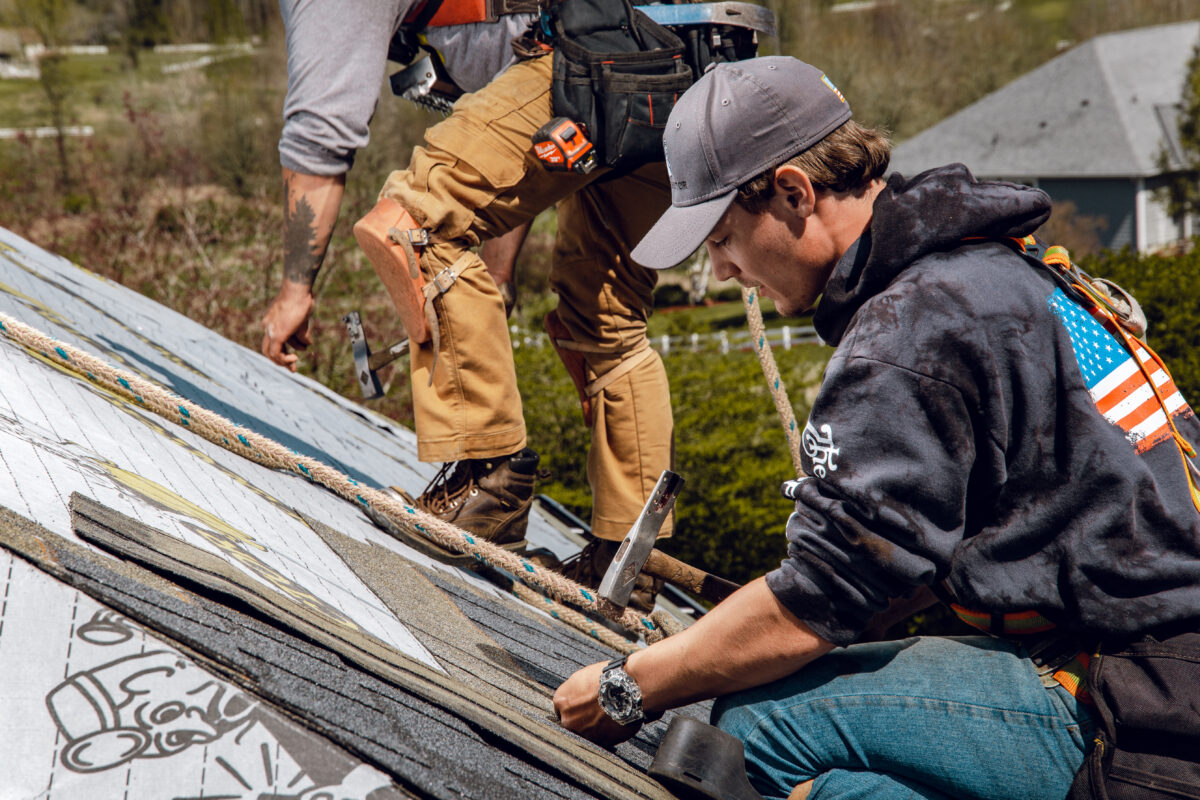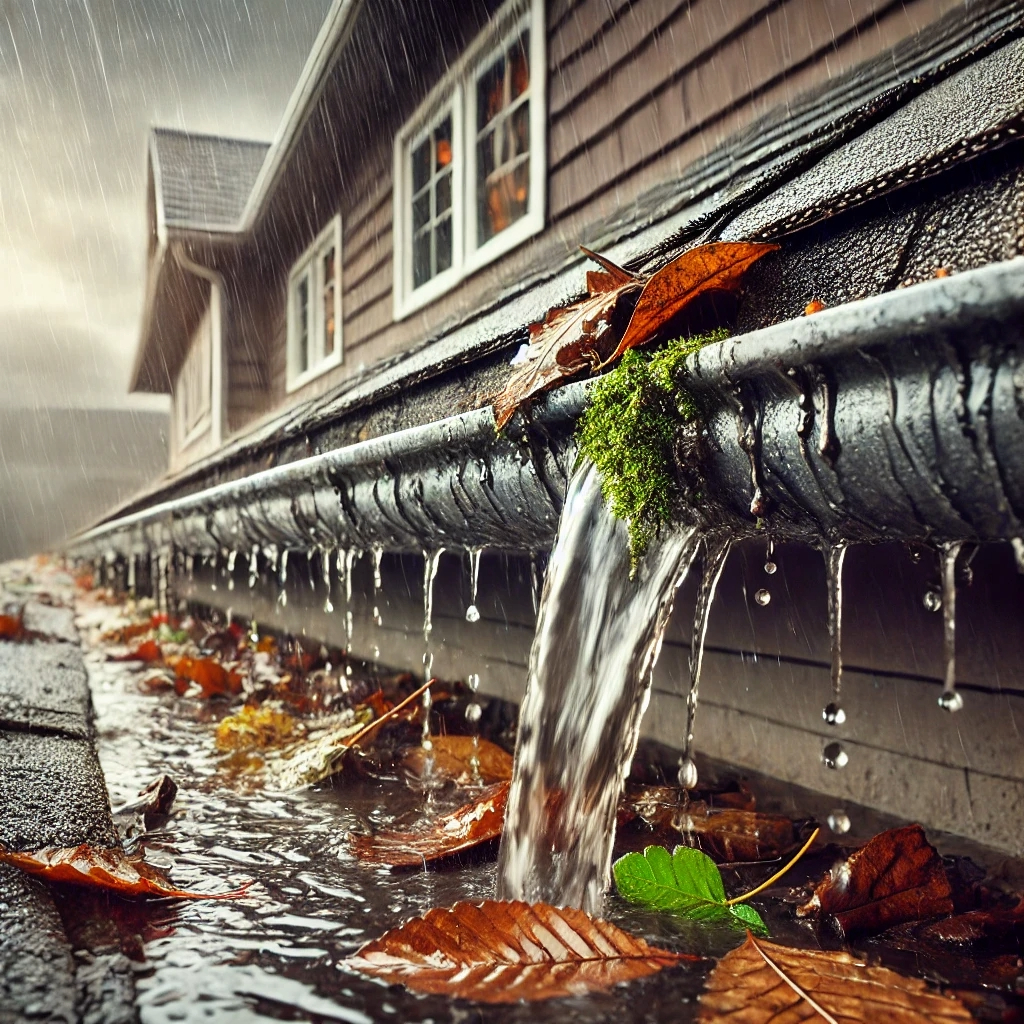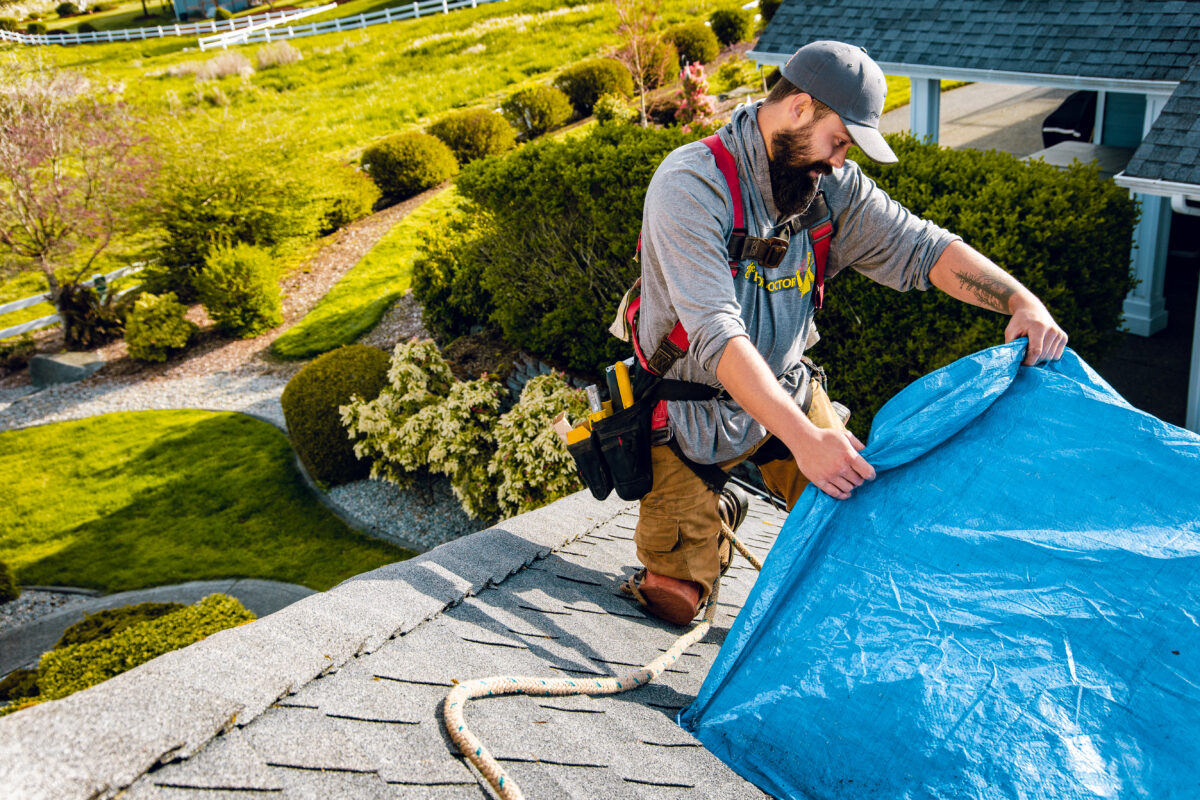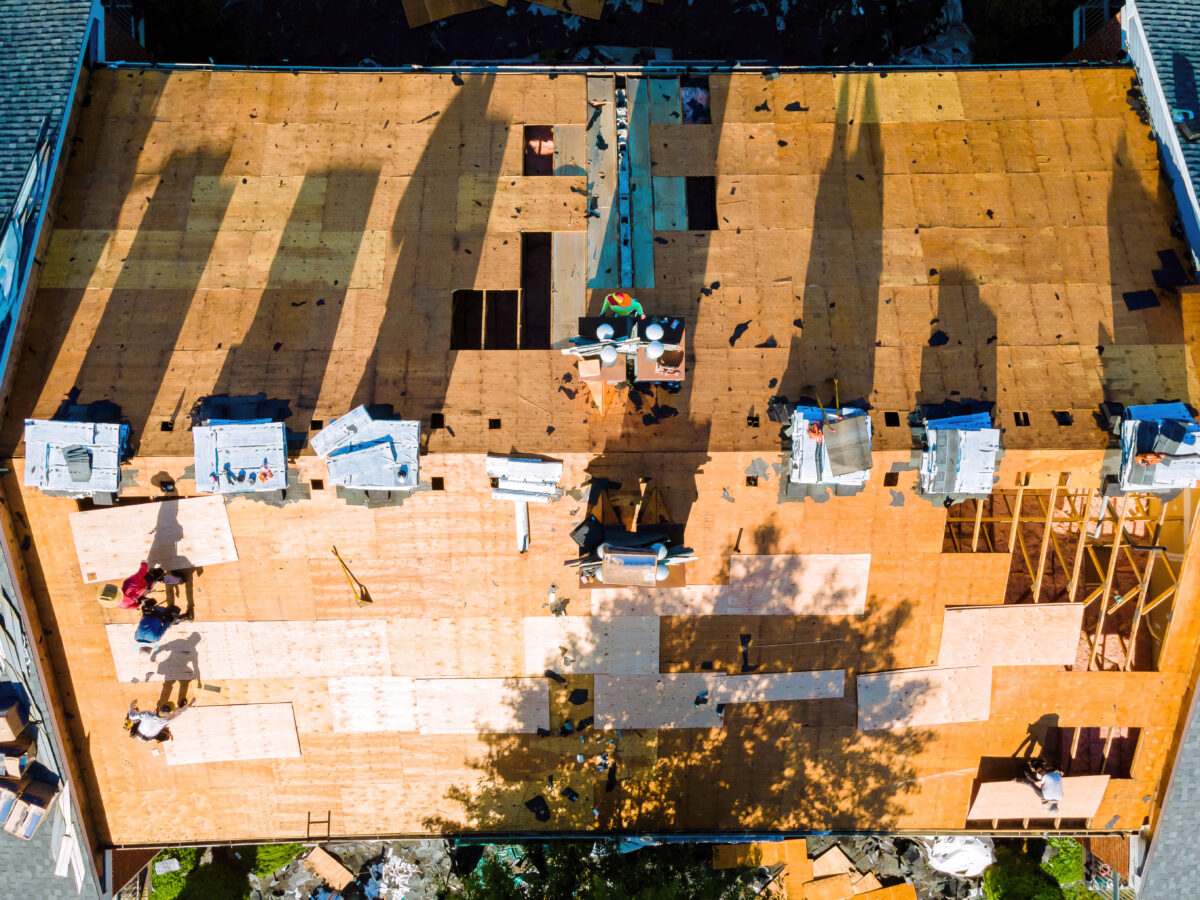How Olympia’s Rain Affects Your Roof and When to Schedule Repairs
Living where we do, it’s not much of a stretch to guess that damage from rain is one of the most expensive and frequent problems that we see in Olympia, yet so few homeowners actually know how to account for the moisture. With long stretches of wet weather, heavy rains, and the occasional windstorm, your roof works hard to protect your home. Let’s take a deep dive into how Olympia’s rainy climate affects your roof, the signs to watch for, and when it’s time to call a professional roofing company for help.
Why Olympia’s Rain Puts Roofs to the Test
How Much Rain Does Olympia Really Get?
Olympia averages over 50 inches of rain per year, which is more than Seattle’s 37-39 inches per year. That much water puts major stress on roofing materials over time, especially if they weren’t installed properly or have aged out of their protective lifespan.
What Constant Moisture Does to Roofing Materials
Rain doesn’t just roll off your shingles and disappear. It seeps into weak spots, softens wood, and corrodes metal flashing. On a wet roof, moisture can get trapped under shingles or tiles, weakening their ability to adhere properly and eventually breaking down the underlayment.
Why Mold, Moss, and Algae are More than Just Ugly
One of the beautiful things about the amount of rain that Olympia experiences is its constant state of greenery. Western Washington is a veritable garden, but this greenhouse effect can be a double-edged sword. Along with the ferns and the flowers, mold, moss, and algae run rampant. Though they may start small, they will quickly take over your roof. Moss, especially, can lift shingles and create entry points for water. Mold and algae contribute to the decay of both the roof surface and internal wood structures.
The Most Common Rain-Related Roof Problems
Leaks that start small but grow fast: A tiny drip in your attic may seem harmless at first. But over weeks of rain, that drip can lead to soaked insulation, ceiling stains, and costly structural repairs.
Soaked or sagging underlayment: When water gets past your shingles, the protective underlayment becomes compromised. Over time, it begins to sag, tear, or rot, allowing even more moisture inside.
Water pooling in the wrong places: Flat or low-sloped roofs can develop drainage issues. When water pooling goes unnoticed, it accelerates material breakdown and increases the risk of leak points.
Clogged gutters and drainage failures: One of the most overlooked issues. Clogged gutters cause water to spill over, soaking fascia boards and siding, and increasing the chance of basement or crawlspace flood damage.
How Different Roofing Types Handle Rain
In a rainy place like Olympia, the material your roof is made of can make a big difference. Some roofing types hold up well in damp, stormy weather. Others need a bit more care to stay watertight.
Asphalt Shingles
These are one of the most common roofing materials in Olympia for a reason. They’re affordable, widely available, and reasonably durable in wet weather. However, they’re not invincible. Over time, asphalt shingles can begin to break down, especially if they’re exposed to constant moisture or weren’t installed with proper ventilation. If moss starts to grow or shingles begin curling, it’s a sign that rain has started taking a toll.
Metal Roofing
On the other hand, metal roofing is a great performer in Olympia’s rainy climate. It sheds water quickly, resists mold and mildew, and is incredibly durable when installed correctly. Metal roofs can last for decades with minimal upkeep, which makes them a smart choice for homeowners who want peace of mind during the wet season.
Wood Shakes and Shingles
Wood shakes and shingles look beautiful and offer a natural charm that fits in well with the Pacific Northwest aesthetic. But they come with a catch: wood is absorbent. In Olympia’s damp climate, that means these roofs need extra attention. Without regular cleaning and moss treatment, wood shakes can trap moisture, which leads to mold, rot, and premature aging.
Tile Roofs
Whether made from clay or concrete, they offer impressive durability and a long lifespan. They’re heavy, which makes them less common in homes that weren’t engineered for the load. In wet conditions, cracked tiles or gaps in the underlayment can let water in and cause damage underneath. Like any roofing material, tile systems need to be installed and maintained carefully to handle Olympia’s frequent downpours.
Rain Damage Warning Signs You Shouldn’t Ignore
If you spot any of these, it’s your cue to talk to a roofing contractor sooner rather than later.
- Water spots on ceilings or walls
- Curling, cracked, or missing shingles
- Moss or dark streaks on the roof surface
- Musty smells in the attic or upper rooms
- Peeling paint or damp drywall near rooflines
How Fast Does Rain Damage Add Up?
In Olympia, the answer is: fast. Especially during fall and winter, repeated storms mean your roof doesn’t get a chance to dry out fully. What begins as minor wear can evolve into major water damage across your roof, insulation, drywall, and even your electrical system.
How to Protect Your Roof
Keeping your roof in shape through Olympia’s rainy months starts with a few key steps. Clean your gutters twice a year to prevent overflow that can damage your siding and foundation. Trim back branches to keep debris off the roof and reduce storm damage. Apply moss treatment annually; moss traps moisture that can lift and rot shingles. And don’t skip the pre-season inspection. It’s the best way to catch small issues before they become costly repairs. These simple habits can help protect your home and extend the life of your roof.
When to Schedule a Roof Repair
After a heavy rain or windstorm, it’s smart to walk around your home and check for missing shingles, clogged gutters, debris buildup, or visible gaps in the flashing. If anything looks off, don’t wait. Spring and early summer are ideal for repairs, but in Olympia, roof work can be done year-round with the right team. The longer you put it off, the more likely a small problem will turn into major damage that requires a full roof replacement.
Can Roof Repairs Be Done in the Rain?
Yes, but we don’t recommend it. If you do choose to work in the rain, the job must be performed with caution. While it’s inadvisable to do a full replacement on a wet roof, minor repairs can be done safely by experienced crews using tarps and weather-resistant materials. However, it’s always best to schedule work when the forecast allows for dry stretches.
What About Roofers? Are They Allowed to Work in the Rain?
Yes, but it depends on the conditions. During light rain, many jobs can proceed safely. But during downpours or storms, it’s safer to wait. Any reputable roofing company will prioritize your safety and theirs.
What Happens If It Rains During a Roof Replacement?
Good roofing companies have contingency plans. If it starts raining mid-job, we pause the work, secure the exposed areas with waterproof coverings, and resume when it’s safe. Protecting your home is always the top priority during any roofing project.
Will Insurance Cover Roof Damage from Rain?
It depends. Some insurance companies consider rain damage a covered peril if it results from a sudden, accidental event like a storm tearing off shingles. But if the roof was neglected or just worn out, your claim might be denied.
Why Olympia Trusts The Roof Doctor
We’re a family-owned roofing company with 60+ years of experience right here in Western Washington. Our trained crews work fast, cleanly, and professionally: most jobs are done in just 1–2 days. We’re licensed, bonded, and insured, and we’re proud to serve both residential and commercial properties. On call 24/7, whether you’re facing an emergency or just planning ahead, we’ve got your back. (And your roof.)
Call The Roof Doctor today to schedule an inspection or get expert advice on your next roofing project. We’re here and happy to help.




